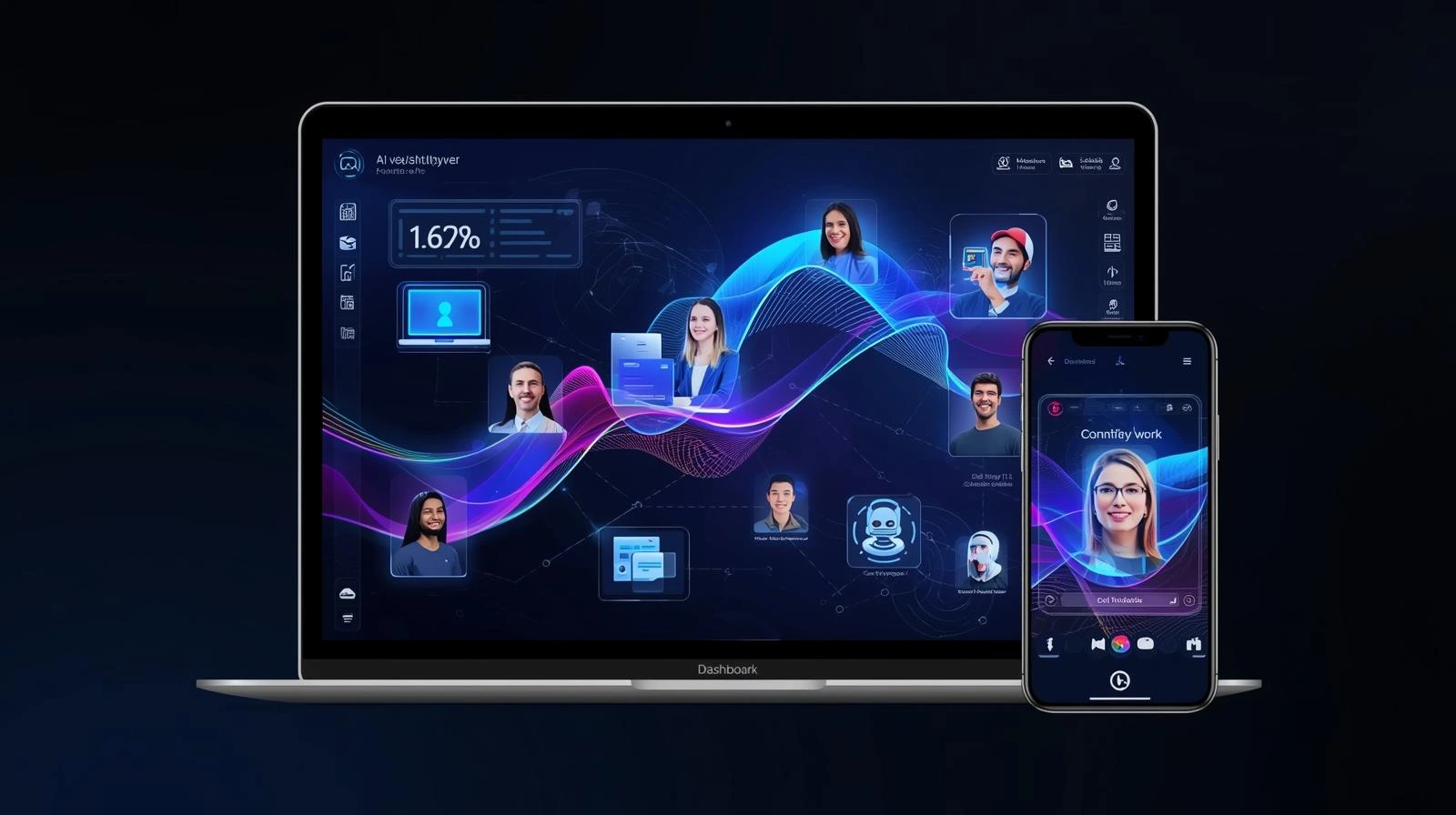Introduction: Why Remote Work Is Defining 2025
The Future of Remote Work: Career Opportunities & Client Collaboration in 2025 is no longer a distant trend but the reality shaping how small and medium-sized businesses hire talent, manage teams, and build lasting client relationships.
Forbes recently noted that over 60% of knowledge workers now prefer hybrid or fully remote roles. Meanwhile, HubSpot reports that small businesses using distributed teams deliver projects 22% faster on average compared to in-office peers.
For SMBs, this means two things:
-
Job opportunities remote are expanding rapidly across marketing, SaaS, design, and support.
-
Client collaboration must be frictionless, powered by tools that erase borders.
This guide will walk you through:
-
What remote work really means in 2025.
-
Why it’s crucial for SMBs and professionals.
-
Key benefits for businesses and employees.
-
The most reliable tools for working and collaborating remotely.
-
Case studies of real businesses thriving with distributed teams.
-
Common pitfalls to avoid.
-
Future trends that will shape remote careers.
Whether you’re a professional seeking careers to work remotely or an SMB leader managing client projects, this playbook shows how to turn remote work into an engine for opportunity and growth.
Top Job Opportunities Remote in 2025

Remote work has opened doors to a wide range of roles that were once limited by geography. In 2025, the most in-demand job opportunities remote include:
-
Digital Marketing Specialists – managing campaigns, SEO, and paid ads from anywhere.
-
Customer Support Representatives – offering 24/7 service across time zones.
-
Software Developers – building SaaS platforms and mobile apps remotely.
-
Content Creators & Copywriters – powering blogs, social media, and brand storytelling.
-
Virtual Assistants – handling scheduling, inboxes, and client management.
These roles not only represent some of the fastest-growing careers to work remotely, but also give SMB professionals flexibility and global reach.
What is Remote Work in 2025?
Remote work today is not just “working from home.” It’s working from anywhere with the right digital infrastructure.
Key aspects of remote work in 2025:
-
Flexibility: Employees are not bound to an office, but work across cities or continents.
-
Digital-first culture: Workflows, meetings, and client updates happen online.
-
Global access: SMBs can hire talent and serve clients regardless of location.
Example:
A marketing consultant in Toronto manages campaigns for startups in Singapore. A software support agent in Manila handles SaaS clients in California. These professionals succeed because businesses now prioritize skills and availability, not geography.
For SMBs, this model means lower overhead and more specialized talent. For employees, it means greater work-life balance and broader opportunities.
Customer Feedback Surveys — Remote teams rely on structured feedback loops to stay aligned.
Why Remote Work Matters in 2025
Remote work isn’t just a convenience — it’s an SMB survival strategy.
Rising Ad & Hiring Costs
With CPC up nearly 19% YoY (WordStream), SMBs can’t afford wasted hires or poor productivity. Remote work cuts costs and expands reach.
Employee Expectations
88% of employees now expect flexible digital-first policies (Salesforce 2024 report). A rigid office-only culture risks talent loss.
Client Demands
Harvard Business Review highlights that remote collaboration improves client project delivery times by up to 30%.
Access to Global Talent
SMBs can bring in niche expertise affordably. A U.S. startup can hire a cybersecurity advisor in India or a designer in Brazil without relocation costs.
Conversion Optimization Guide — Because optimized digital funnels pair naturally with distributed teams.
Key Benefits of Remote Work for SMBs
Higher Sales & Revenue
-
Better access to global talent → better campaigns and service.
-
Faster projects mean happier clients → repeat business.
Improved Customer Experience
-
Support teams span multiple time zones.
-
Virtual tools make clients feel included in every stage.
Reduced Operational Costs
-
Rent, utilities, and travel replaced by lean software budgets.
-
SMBs reinvest savings into growth (ads, training, product).
Best Remote Work Tools & Software in 2025

Slack
Real-time messaging, topic-based channels, integrations. Keeps communication clear.
Zoom
Dominates video collaboration. AI highlights and live transcripts speed follow-ups.
Trello / Asana
Project boards and task assignment for distributed teams. Easy for SMBs scaling.
Notion
Knowledge management + docs + workflows. Central hub for teams.
Google Workspace / Microsoft Teams
Shared docs, calendars, and calls. Core collaboration suite for SMBs.
HubSpot CRM
Client tracking, collaboration, and marketing automation. Helps SMBs manage leads remotely.
HubSpot Remote Collaboration Guide.
Step-by-Step Guide for SMBs to Implement Remote Work
-
Define Your Policy → Clear availability, communication, and KPIs.
-
Select Tools → Mix Slack, Zoom, Trello/Asana, and CRM.
-
Onboard & Train → Soft skills (virtual etiquette), tool training.
-
Client Collaboration Habits → Regular check-ins, transparent dashboards.
-
Measure & Refine → Run surveys, analyze feedback, tweak workflows.
Customer Feedback Surveys — Practical survey templates for remote teams.
Real-World SMB Case Studies
-
Austin Agency: Switched hybrid → fully remote. Saved 30% costs, doubled ad spend ROI.
-
Singapore Marketing Team: Four time zones, Trello + Slack = aligned campaigns. Revenue up 2.5x.
-
London Consultancy: Video-first workflows → 22% faster turnaround. Clients rated satisfaction up 40%.
Common Mistakes to Avoid
-
No clear communication rules.
-
Under-investing in onboarding.
-
Ignoring client collaboration tools.
-
Trying too many tools at once.
Future Trends in Remote Work
-
AI-driven project forecasts — predictive task assignment.
-
Immersive video meetings — holographic/hybrid AR.
-
Borderless gig networks — niche experts on-demand.
FAQ
Q1. What are the best remote careers in 2025?
Marketing, SaaS support, consulting, content creation, and design. Roles that rely on digital-first tasks thrive.
Q2. How can SMBs collaborate with clients remotely?
By using Slack, Zoom, Trello/Asana, and CRMs. Regular updates and transparent dashboards build trust.
Q3. What tools are essential for remote work success?
At minimum: Slack (messaging), Zoom (video), Trello/Asana (projects), Notion (knowledge base), CRM (client management).
Q4. How do remote jobs improve work-life balance?
Remote roles save commute time, allow flexible schedules, and let professionals design environments that suit them.
Q5. Does SuperLocalFans help with remote work?
Indirectly. While not a remote work tool, it supports distributed teams with AI-powered scheduling and analytics for content and campaigns.
Conclusion
The future of remote work is here. SMBs that embrace it win on costs, talent, and client retention. Professionals gain more diverse careers.
From Slack to Zoom to Trello, the right stack makes collaboration seamless. Avoid common mistakes, learn from real SMBs, and focus on building trust with clients.
Ready to align your remote strategy with growth? Explore more playbooks on SuperLocalFans Blog
The Future of Remote Work: Career Opportunities & Client Collaboration
